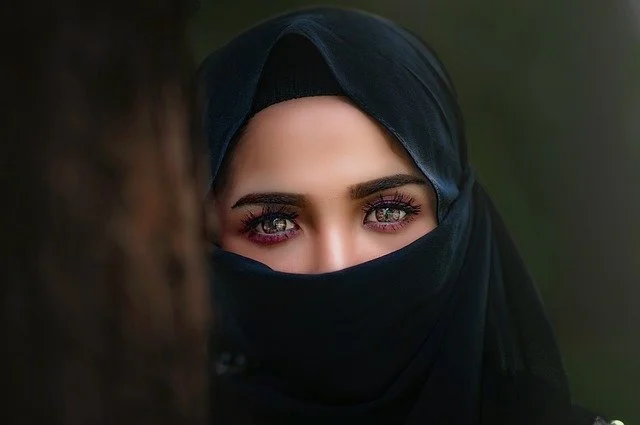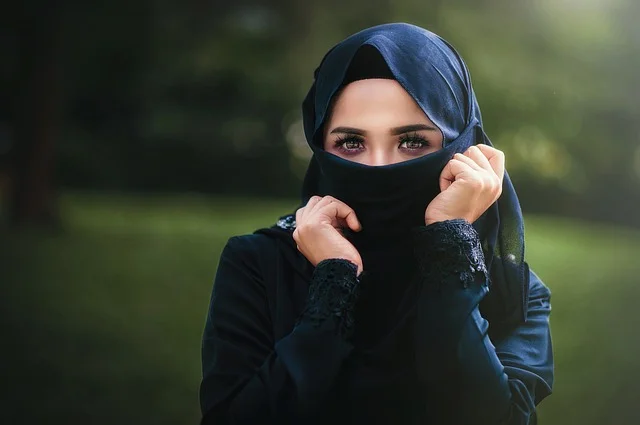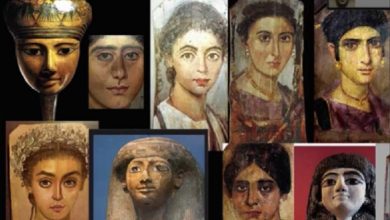How female tradition of covering face appear and who was forbidden to do it?

Veils were worn by those who were embarrassed about their faces, those who, on the contrary, considered it too great a privilege for others to admire them, those who wanted to emphasize their position – family or social – or those who needed to protect themselves from the sun or wind. Is the veil a thing of the past? Nothing of the kind: having arisen long before the emergence of Muslim or Christian traditions, it promises to survive more than one period in the history of mankind.
Who was it befitting to wear a veil on the head in antiquity?
Clothing, which by itself in human society was not always used – and in some places, it is still not used. Nevertheless, already in ancient times, it began to perform a practical function – to protect from cold and precipitation. People have learned to meet by clothes for a very long time. And the first mentions of the obligation or the right to wear capes on the head that cover the face are already found in Assyrian laws – that is, the norms of more than three thousand years ago.

At the same time, the “lower” classes were forbidden to cover their heads. The punishment for violating this rule was severe: if a slave or a representative of the ancient profession was “caught” wearing such a cape, the first threatened to cut her ears off, the second was sentenced to rods and sent into slavery. That is, the veil served as a mark of distinction between respected and high-ranking Assyrian women.
A similar meaning of such a piece of cloth, hiding a woman from prying eyes, had in ancient Greece – it was a Kalyptra. It was worn by women in the Classical period and, most likely, even earlier. Even in the Hellenistic era, it was considered normal for a Greek woman to cover her face and hair in public.
Roman women had to keep their homes, and their hair was hidden from prying eyes to show respect for their husbands as to the head of the family. Unmarried girls did not cover their heads. Heathers was not subject to this rule either.
The monotheistic religions brought even more imperative into the customs associated with clothing: in Judaism and Christianity, as well as the Zoroastrians, the wearing of the veil by women was perceived as a symbol of modesty and piety. And later, this tradition was adopted by Muslims. During Ottoman rule, the rules about women having to wear clothes that conceal the entire body, hair, and face became especially strict.
Who and what the veil could protect from
Hashim ibn Hakim, nicknamed al-Muqanna, meaning “the veil”, was one of the most famous characters in history who hid his face from others. Muqanna was born in the eighth century in the city of Balkh. Early academics thought he was born in Sogdia. However, it is widely acknowledged that he was born in Balkh (present-day Afghanistan). He was the organizer of the revolt against the Umayyad dynasty, called himself an incarnation of God, and explained his veil by the fact that no mere mortal could bear the glow of his face. Evil tongues, however, claimed that behind this green silk cloth, Muqanna concealed some terrible physical defects, but this remained unconfirmed.

The fact that the chador, the predecessor of the veil, was worn primarily by women of aristocratic families, and peasant women and maids were either allowed or generally prescribed not to cover the head, can be explained from the practical side: it is difficult to work in the fields wearing a veil. But for the inhabitants of the African desert, on the contrary, the cloth tied around the head and face was salvation. The Tuaregs, Songhai, Hausa, and other peoples of the Sahara have long worn such a veil, tying it to protect themselves from the wind and sand.
Images of human faces with only eyes and no nose or face have been found in ancient African rock art, meaning that the custom of wearing such veils is probably much older than the world’s religions and even the first sets of laws. For Tuaregs, the wearing of a Tagelmust, a headdress combining the characteristics of a turban and a veil, is considered a sign of masculinity. Appearing with an open face is considered indecent. For women, however, all this does not apply, only the Tuareg men cover their faces with a cloth.

It is clear that in medieval Europe, there was no indulgence regarding women’s clothing – hair was covered with a veil, then they wore bonnets and hoods. And here, since the XV century veil becomes rather a fashion accessory than an obligatory element of the closet of a decent Christian woman. Veils were very popular at the Burgundian court – women pinned them on hennin – a cone-shaped headdress.
Veil Fashion
Later, during the Baroque and even more Rococo period, faces were not hidden, and therefore veils were rarely worn. However, they were not forgotten in those moments when it was required to remain incognito – when visiting a lover, for example, or for some other dark deeds – here, the numerous novels of Dumas the father are called to help the imagination. In southern Catholic Italy and Spain, women continued to piously cover their hair and wore a black lace mantle, another “relative” of the veil. Now mantilla is worn only during the holidays, including religious ones.
The end of the 19th century was the time of the triumphant return of veils to the female wardrobe of urban women. They wore a lot of them – usually in the form of a small piece of mesh fabric attached to a hat – on the whole face or half of the face. With the outbreak of the First World War, these trends came to an end. And again, veils gained popularity in the sixties, becoming a real squeak of fashion for some time.
As for the Islamic world, throughout the 20th century, the custom of wearing a veil and other items of clothing that hide hair and face seemed to lose their former stability, but in recent decades, veils have again become an indispensable part of a Muslim woman’s wardrobe. The chador is often worn with the niqab, which covers the face, leaving only slits for the eyes.

The veil is still not losing ground in wedding fashion – this traditional adornment of the first ancient Roman and then Christian bride remains relevant in modern times. For centuries in Europe, black veils of mourning have been worn during and in the first period afterward. And lace capes are now supposed to be worn in some Catholic churches, as in the old days. Veils often adorn the hats of those aristocratic women who take part in high-level ceremonial events, for example, at the races in Ascot, where neither a lady nor a gentleman can appear without a headdress.




